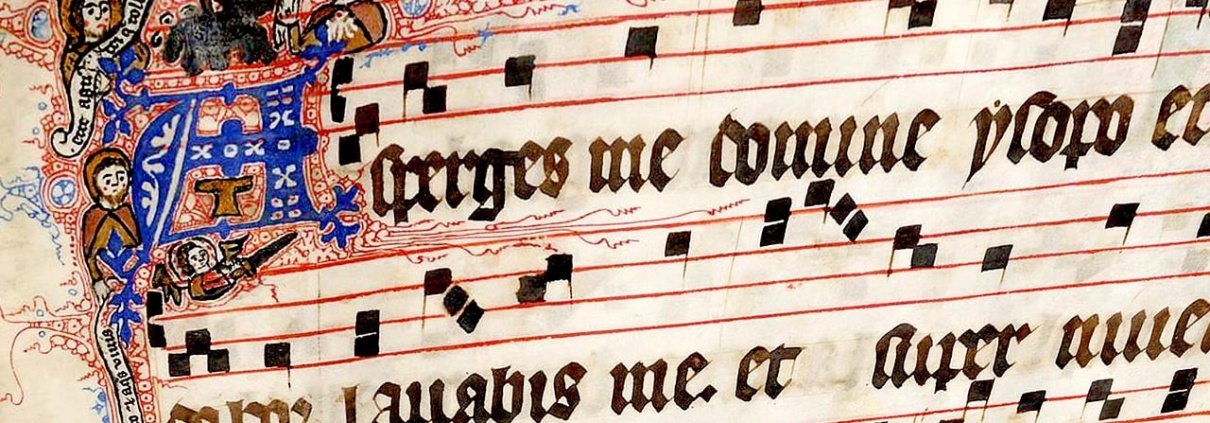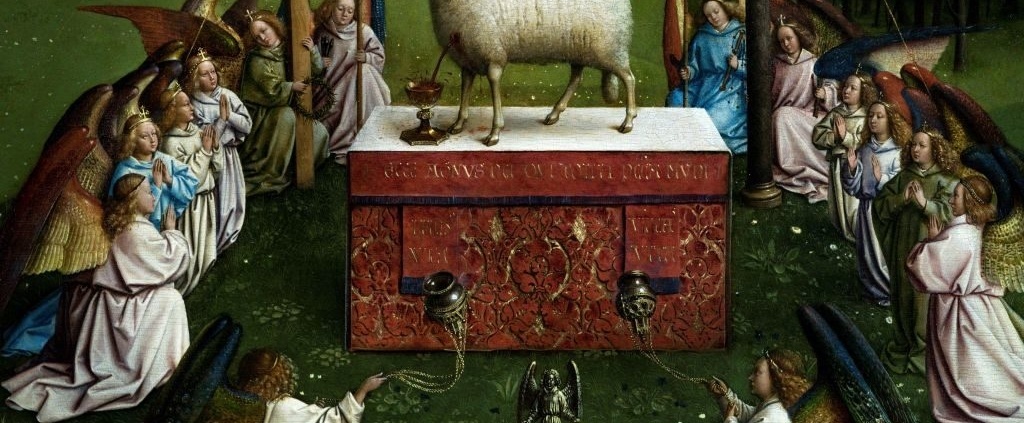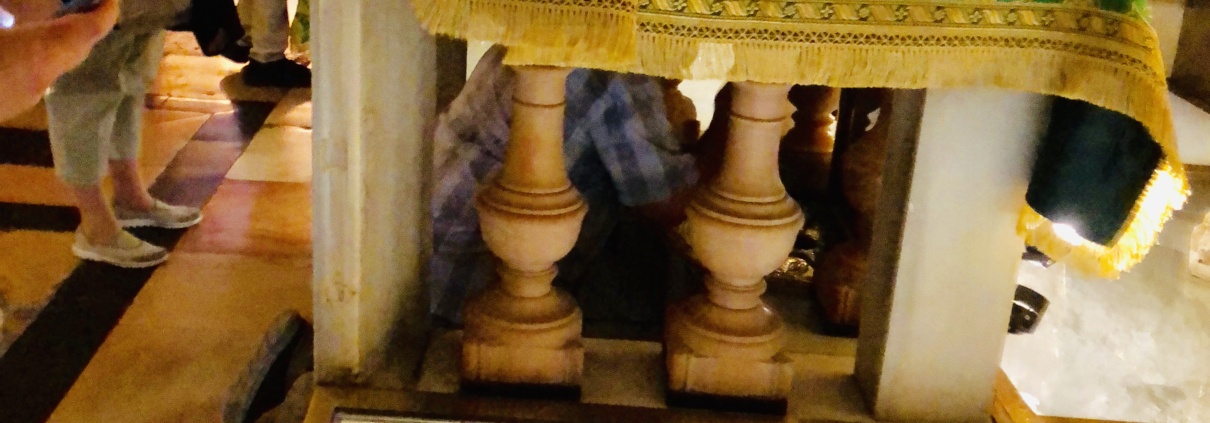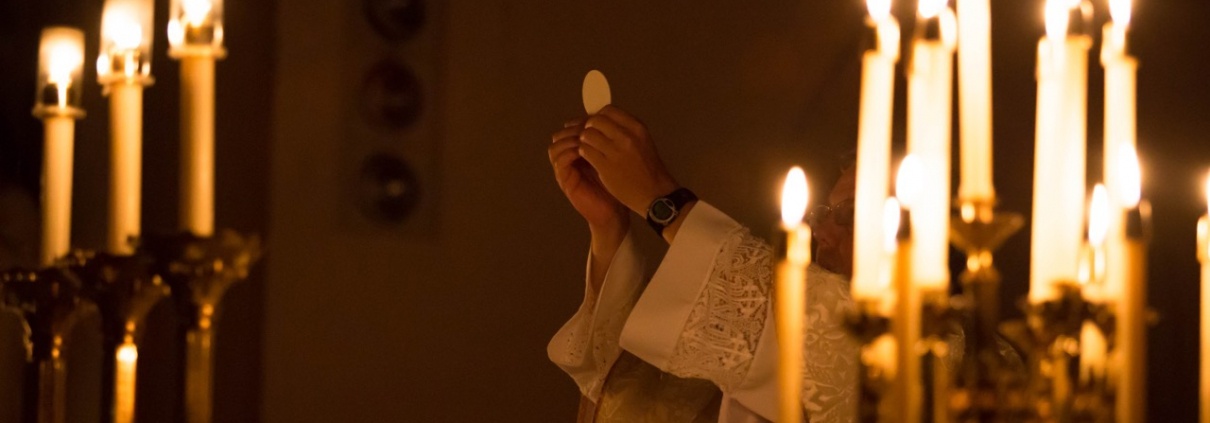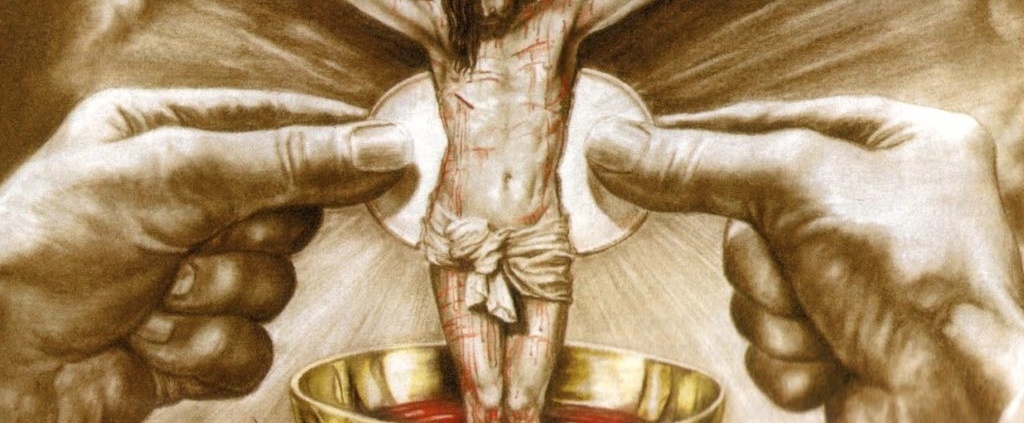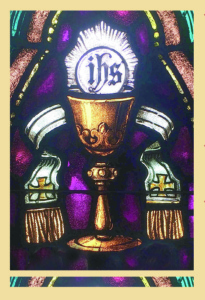Thomas Aquinas’ Mystical Experience
By David Cooley.
I hope that the brief theological insights in these pages bring comfort and a greater awareness of the fact that, as Cardinal Robert Sarah wrote in his recent letter to the Church, “God never abandons the humanity He has created, and that even the hardest trials can bear fruits of grace.” In this difficult year in which we have all suffered the effects of the Covid-19 pandemic and have all experienced at least some time of Eucharistic fasting, we can renew our appreciation of the vital importance, beauty and immeasurable preciousness of the Eucharist and the Mass. Remember, as the name of this series reminds us, the Second Vatican Council said that the Eucharist is “the summit toward which the activity of the Church is directed,” and “at the same time it is the font from which all her power flows” (Sacrosanctum Concilium, 10). Before you move on to the final pages there is one last reflection on the Eucharist and on a particular saint that I’d like to share.
If you are anything like me, there is one saint that sometimes comes across as more than a little intimidating. His name is Thomas Aquinas. Now, I’ll admit that I turn to an explanation of his now and again to help me better understand a difficult concept, but reading him thoroughly and following him down his thought processes doesn’t usually make me feel smart — just the opposite, actually. After all, he is not only a Doctor of the Church, but the “Angelic Doctor,” as the Dominicans like to say. His works are vast and overwhelming and he can be a little difficult to relate to.
However, there is a story about Thomas Aquinas that changed my perspective on him forever and really sparked my imagination. In the Thurston and Attwater revision of Alban Butler’s “Lives of the Saints,” the event is described this way:
“On the feast of St. Nicholas [in 1273], St. Thomas Aquinas was celebrating Mass when he received a revelation that so affected him that he wrote and dictated no more, leaving his great work the ‘Summa Theologiae’ unfinished. To Brother Reginald’s (his secretary and friend) expostulations he replied, ‘The end of my labors has come. All that I have written appears to be as so much straw after the things that have been revealed to me.’ When later asked by Reginald to return to writing, Aquinas said, ‘I can write no more. I have seen things that make my writings like straw.’ … Aquinas died three months later while on his way to the ecumenical council of Lyons.”
Thomas’ reaction to his experience is quite extraordinary. It is interesting to note that, traditionally, it is believed that Thomas Aquinas had his mystical experience at the moment he lifted the consecrated Host during Mass. But whether it was at that exact moment or not is beside the point.
While it’s true that we are not all called to be great theologians like St. Thomas Aquinas, great orators like St. John Chrysostom, brave authors like St. Catherine of Siena, world-changing missionaries like St. Teresa of Calcutta, or amazing mystics like Sts. Teresa of Avila and John of the Cross, we are all called to greatness and we are all called to sainthood.
Maybe we can’t all be brilliant like Thomas Aquinas, but that moment he had with the Lord belongs to each and every one of us — it is open to all of us. That is precisely what is waiting for us in the Eucharist. What the great doctor of the Church realized, close to the end of his life, is that there is nothing in the universe to compare to our Lord. This means that no amount of brilliant ideas we have, no amount of friends we win, no amount of awards we’re given, no amount of fame we acquire will ever be enough to fulfill us. This is because we were made for more. The things that can seem so important to us right now, when seen through eyes fixed on eternity, will not seem to be much more to us than straw.
This doesn’t mean that our lives don’t matter – just the opposite! This doesn’t mean that God doesn’t care about the things we care about – he does! Scholars, and Catholics in general, have never understood Aquinas’s comment to be a retraction or refutation of anything he wrote. If that was the case, Pope Leo XIII would not have encouraged a renewed interest in Thomistic theology and philosophy, and Aquinas would not have been named a Doctor of the Church. No, Thomas wasn’t saying that he had been wrong about God; instead, he was given a rare glimpse of how much our words and thoughts fall short in describing and understanding the glory of God. Knowing this helps us in our worship and to keep everything in proper perspective. Still, we can’t help but take the Eucharist for granted. If we could truly see what was before us then everything else, no matter how glorious, would seem worthless. Yet we don’t decide worth — God does. His love knows no bounds and he already decided that you were worth dying for. He is waiting for you right now. Don’t walk to him, run.



